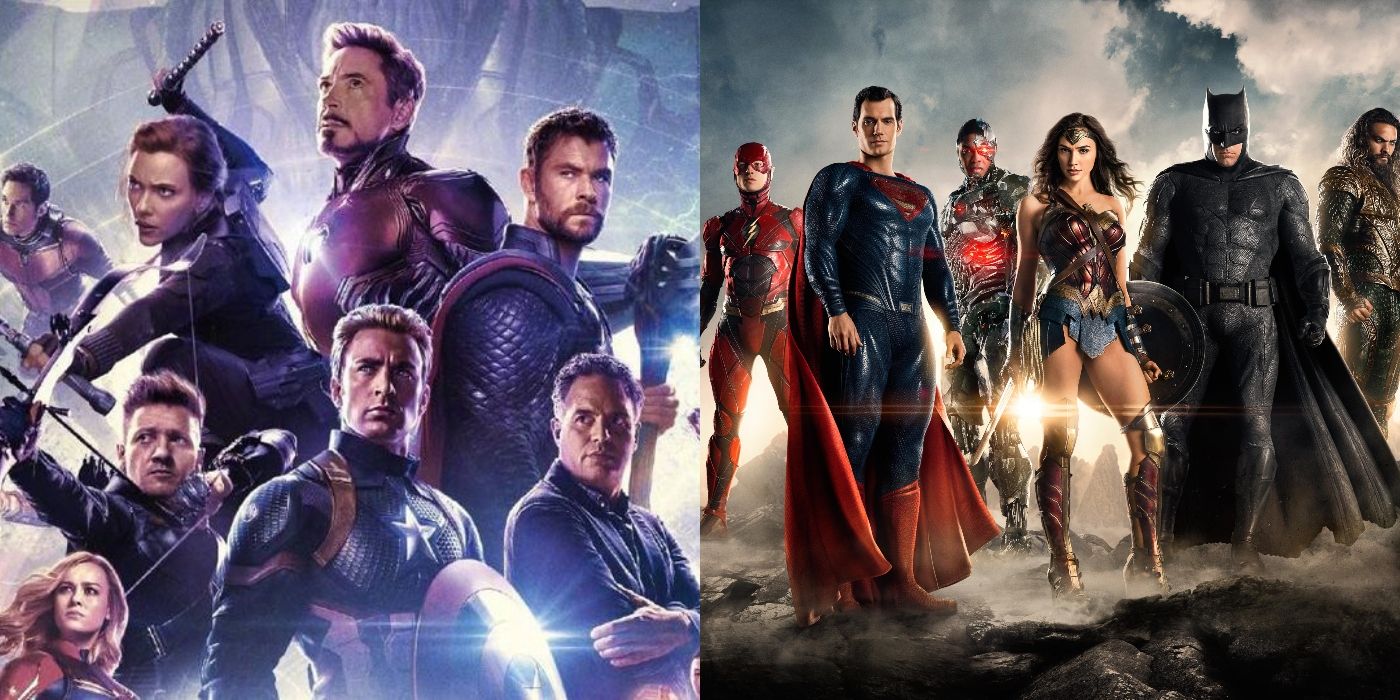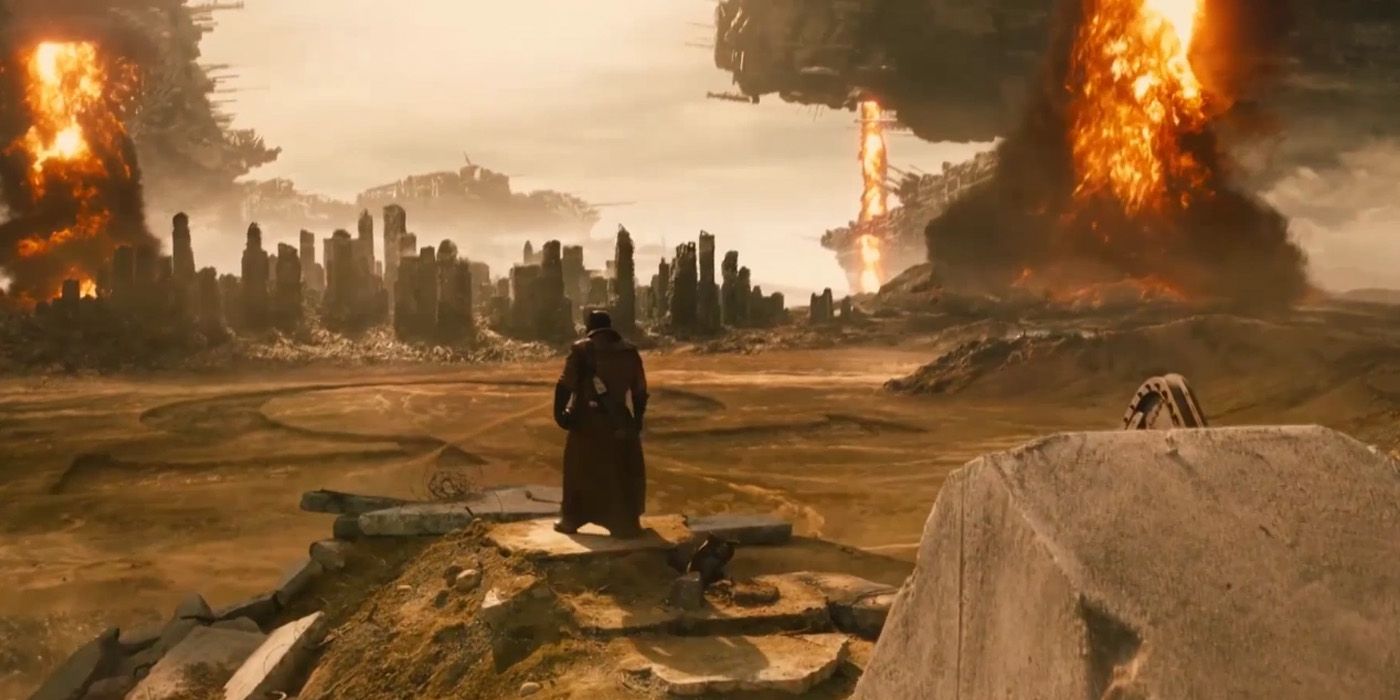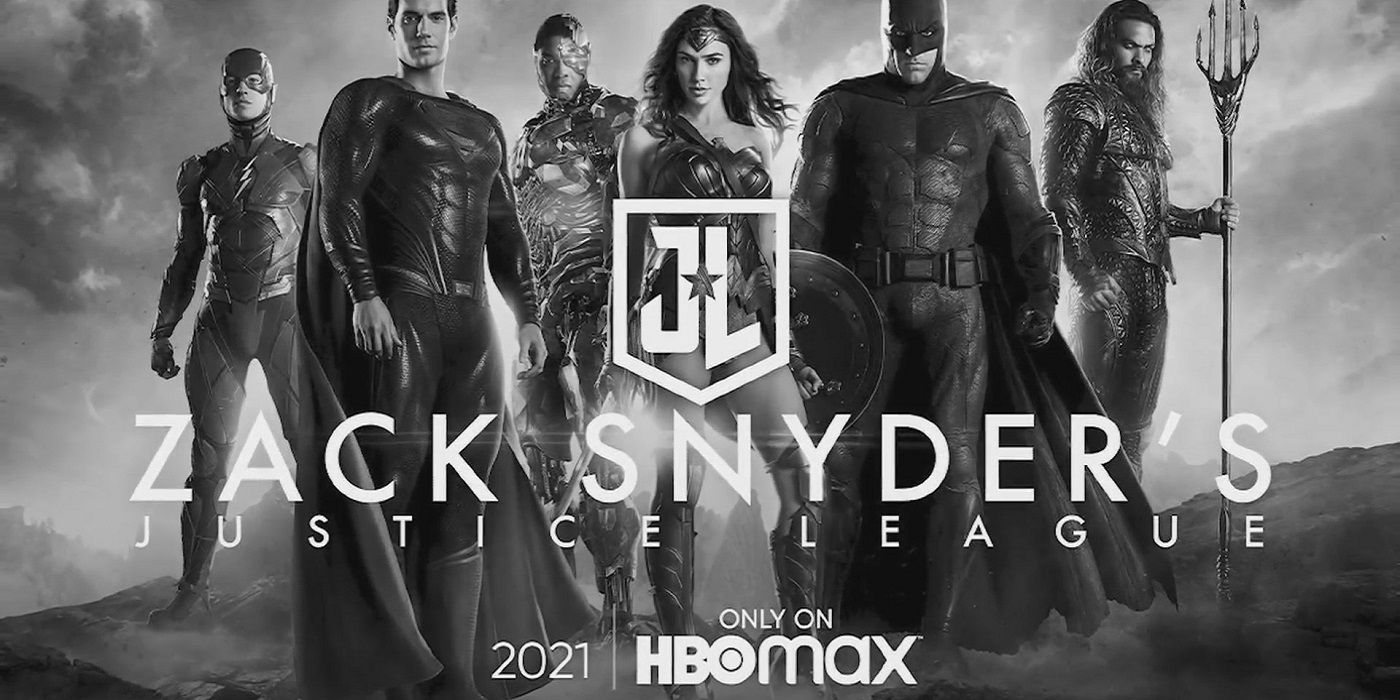Zack Snyder's 'Justice League 3' Could Have Been The Antithesis To Avengers: Endgame

Zack Snyder embarked on a quest to build the DCEU over eight years ago with Man of Steel. It's been four years since WB and Joss Whedon brought a butchered version of Justice League to theaters. Now, Zack Snyder has brought his true vision of the Justice League to HBO Max. The four-hour behemoth seems to hold every idea the director ever had for a superhero movie. The movie expands upon some of those ideas, but many more it merely teases. It's clear after watching Zack Snyder’s Justice League that the man had plenty more plans for the world’s greatest heroes.
A scene near the end of the Snyder cut offers the biggest peek at what might have been in the "Snyderverse" as it's known. The camera pans across a landscape that would be fit for a Mad Max film except for the ruined city (Gotham, perhaps) deep in the background. Fans instantly recognized the setting as the same one from Bruce Wayne’s dream sequence in Batman v Superman: Dawn of Justice. These dreams, interpreted by Bruce as premonitions, are basically mid-movie trailers for sequels that will never be.
The future that Bruce and Justice League fans get a look at is called, really, the Knightmare. The original Knightmare sequence in BvS took criticism for being a confusing and lengthy diversion from the film’s plot. The Snyder cut Knightmare sequence avoids this issue by tucking itself neatly in at the end of the film, after the plot's been resolved. In the Knightmare scene, fans see the promise of a superhero movie unlike any that's come before.

Marvel has made a name for themselves by putting out humorous, approachable action adventures that families can gather around for some good-natured superhero fun. The only moment of real weight and despair in the MCU was the Snap — and Marvel spent over ten years and twenty films getting to that point. Fans of Snyder’s take on the DCEU love his focus on the darker side of superhero mythology. They see it as a necessary contrast to the steady stream of content Marvel puts out.
The entire Avengers franchise is about heroes building each other up to defeat a great evil. Zack Snyder’s Justice League hints at a franchise much more concerned with breaking heroes down to their base components. Snyder’s Justice League replaces Marvel’s hook, humor, with his personal go-to, the rule of cool.
Regardless of the criticisms it’s received, there’s no denying that the Snyder cut’s Knightmare future is cool. Joe Manganiello has never looked better as Deathstroke. He is grizzled, clearly scarred after whatever has left the world in its miserable condition. He also now fights alongside Batman, earnestly it seems. Leto’s Joker finally gets to interact with Batfleck on screen. Every moment of his performance evokes the years he’s spent fighting Batman that viewers haven’t gotten to see. The highlight “cool” moment is Batman telling Joker, with a bit of profanity for flair, he’s going to kill him. Aquaman, and Wonder Woman are nowhere to be seen. Maybe they died in a battle against Superman, who, after Lois Lane somehow died, turned to the Darkseid. Just a flash of everything, no context for any of it.
Likely the journey to this future would have consumed most of the second Justice League film. Most, but not all. Snyder has openly discussed his plans for Justice League 3. The final piece of the trilogy would have picked up after the death of Batman to focus on Superman’s redemption and the defeat of Darkseid.
Snyder’s conclusion to his run on the DCEU would have been the antithesis to Marvel's Endgame. The support of a team gave Tony Stark the courage for self-sacrifice. The lack of a team would have given Snyder’s Superman the motivation to redeem himself. Marvel reset their universe with minimal casualties. Snyder’s world seems beyond true repair.

Fans of the Snyderverse often blame aesthetic tastes for its failure. They claim that general audiences are too accustomed to Marvel’s quips and family-friendly posturing. Therefore, the poor reception of the Snyderverse films is just due to a distaste for darker, grittier stories. This view misses the point entirely.
The Knightmare scenes are unsatisfying for Snyder’s fans because they represent an opportunity lost. The scenes are unsatisfying for everyone else for the exact same reason. Audiences struggle to be excited seeing Deathstroke work with Batman because they've never seen him work against Batman. Likewise, Batman’s interaction with Joker could be grave, bitter, or hilarious depending on the viewer’s mood. The film hasn't given any context to their relationship, so there's no real sense of how the interaction should be understood. Even “evil Superman” comes off as nothing more than a cool idea, not seen to fruition.
The common defense is that "real" fans already know the backstory for everything on screen. But looking at Justice League that way transforms it into a "choose your adventure" story. Snyder supplies all the cool moments and visuals with the expectation that audiences will fill in the motivations, the backstory, the reasons for being invested in the story. If audiences were so put off by the darkness, say Snyder's defenders, then they'd see how great his Justice League really is.
Taste is of course a factor when comparing films as different as Endgame and Zack Snyder’s Justice League. But aesthetics aren’t the main difference between the films—investment is. Clearly, Snyder is incredibly passionate about the world he’s creating and the stories he is telling with the DCEU. The problem is that he has too much enthusiasm for the big moments and the cool factor. Snyder knows how to end his Justice League, but he seems less clear on how to get there. In his excitement to show what he loves best about his story, Snyder forgets to show audiences why they should love it, too.

Post a Comment